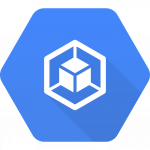Though K8s enables us to deploy our applications as containers on a set of machines configured as workers/minions in a cluster, however it does’nt deploy the containers directly on the nodes…. but on Pods A Pod is not a process, but an environment for running container(s). The containers are encapsulated into a k8s object called […]
Vagrant Script for Kubeadm
In the Bootstrap K8s cluster – Kubeadm post, we punched in a lot of commands to get a k8s cluster. In this blog let’s make that long process simple by using a script which I call Magic Script … rightly so, as I can have a working k8s cluster with JUST 1 COMMAND in under […]
Minikube Installation
Minikube is local Kubernetes, focusing on making it easy to learn and develop for Kubernetes. It’s a single node k8s setup, that just needs is Docker (or similarly compatible) container or a Virtual Machine environment, and Kubernetes is a single command away: minikube start In this post we’ll be installing Minikube on a VM running Ubuntu […]
Bootstrap K8s cluster – Kubeadm
Now when we know how the k8s components hang together, it’s time for creating a shiny new cluster for ourselves. There are a few ways to get this done manually – k8s the ‘hard way’ bootstrapping – using the kubeadm tool vagrant script – installing cluster on windows machines minikube – single node setup for […]
What is Kubernetes?
Kubernetes, aka k8s, is an open-source Container Orchestration system for automating deployment, scaling and management of containerized applications & microservices. In simple words, one can cluster together groups of hosts running containers into logical units, and Kubernetes helps in easily & efficiently manage such clusters Table of Contents Introduction Cluster Architecture Control Plane Components Kube-API […]





Recent Comments